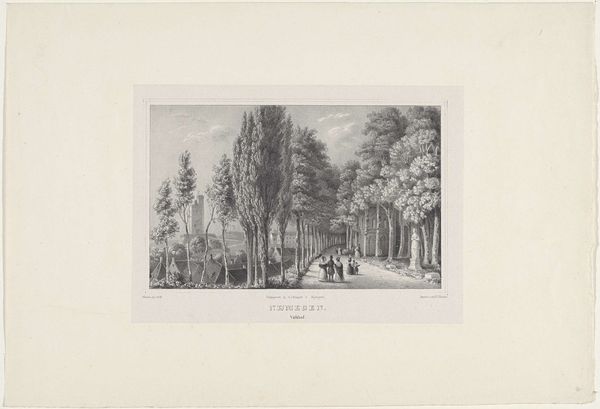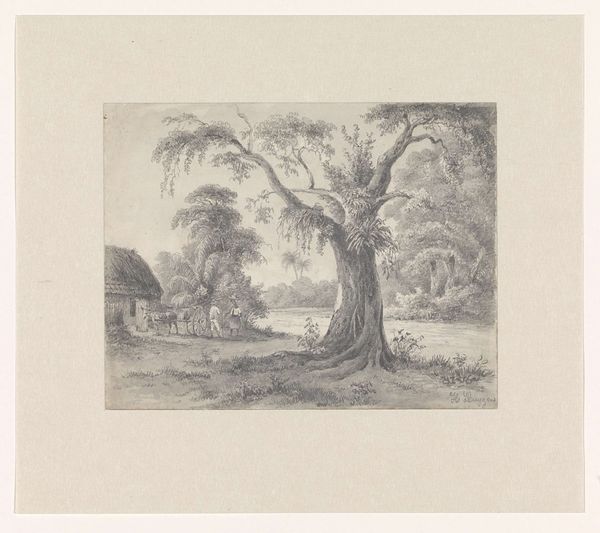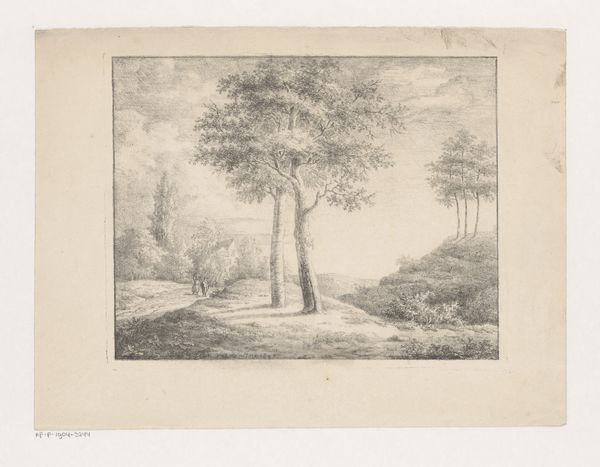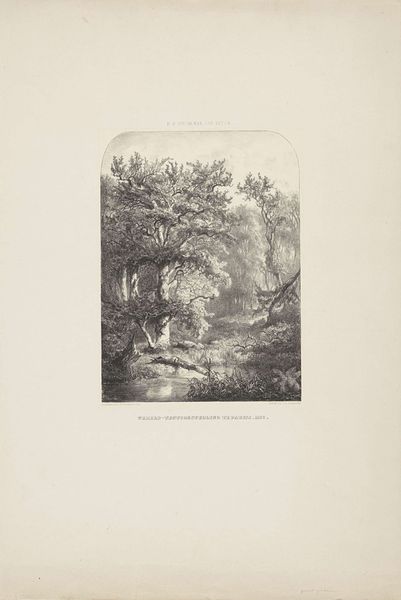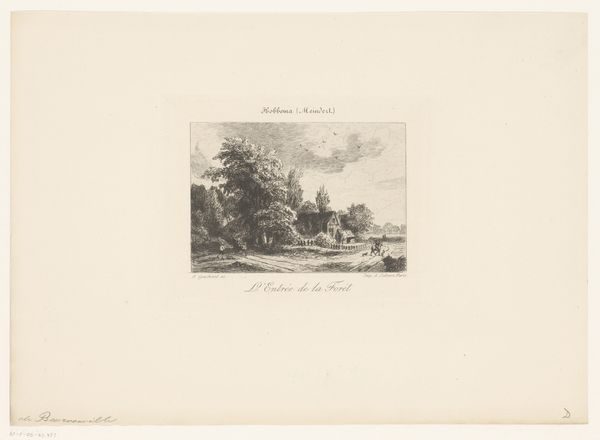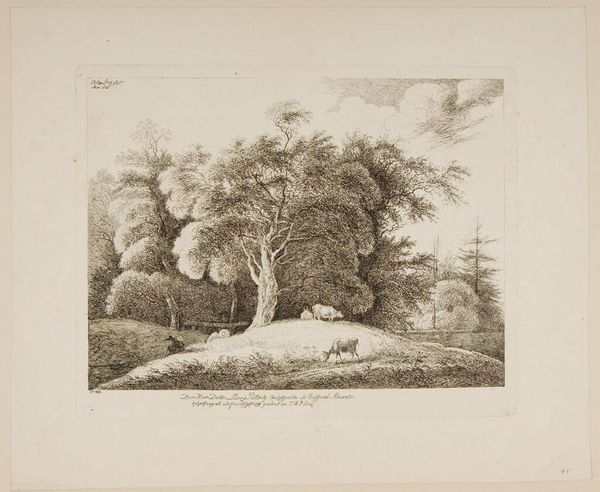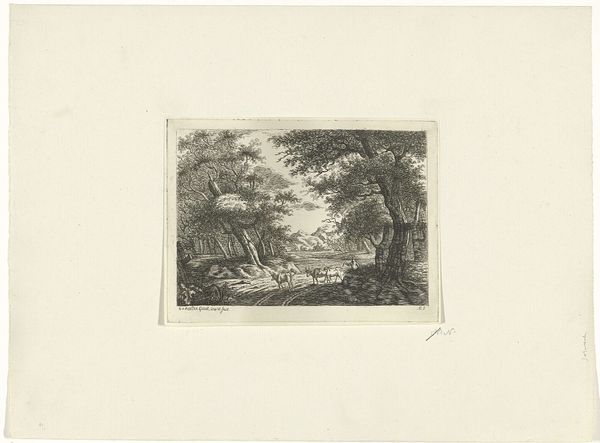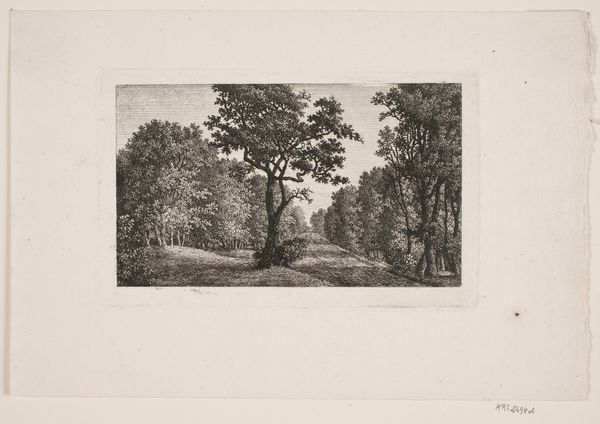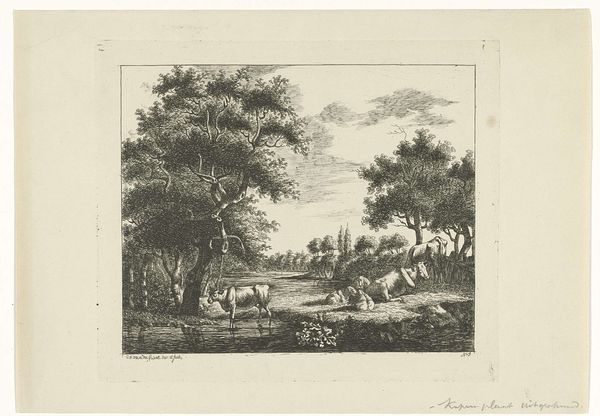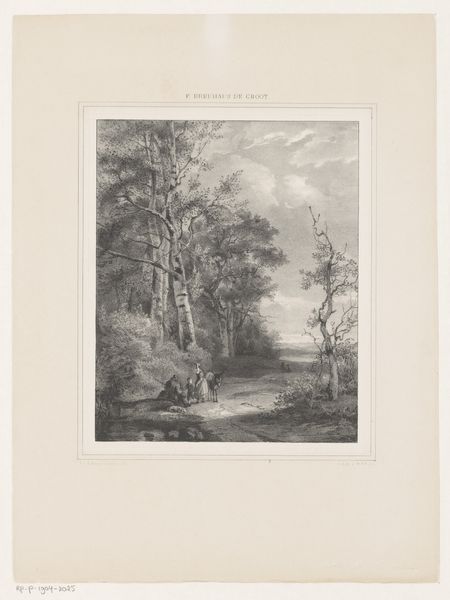
print, paper, engraving
#
dutch-golden-age
# print
#
landscape
#
paper
#
romanticism
#
engraving
Dimensions: height 290 mm, width 425 mm
Copyright: Rijks Museum: Open Domain
Curator: Let's dive into this engraving, "Valkhof in Nijmegen," created between 1822 and 1845, currently housed in the Rijksmuseum. It's a landscape print, relying on the graphic qualities inherent in engraving. Editor: Right, it's by Hilmar Johannes Backer, and I am struck by the detailed lines used to depict the trees and figures, yet it still evokes a feeling of vastness. I’m curious, what draws your attention most about this particular work? Curator: As a materialist, I am drawn to consider the implications of creating this artwork as an engraving on paper during the Romantic era. The choice of engraving, a process demanding skilled labor and precise tools, elevates it beyond a mere landscape. What socio-economic circumstances allowed for such refined craft to flourish at this time? How does the *process* of creating engravings impact their meaning, compared to say, landscape paintings, which we see so often? Editor: That’s interesting. I was thinking more about the subject matter – a leisurely walk through a manicured park. Curator: Exactly! We have to think about paper production itself - access, skill. This engraving becomes an object of consumption, mirroring the activities of leisure it depicts. Who were the intended consumers of these engravings, and how did that affect what Backer chose to represent? Also, consider that engravings often functioned as a means of distributing images widely; what’s the social effect of distributing romanticized landscapes through mechanically reproduced prints? Editor: So, it’s less about the romantic landscape and more about… the socio-economic web that allowed its creation and distribution? I never really considered that! Curator: Precisely. It prompts us to think critically about the means of production, consumption, and the social narratives embedded in seemingly idyllic scenes. It changes how one perceives the artistry present within. Editor: I'll definitely view engravings differently from now on, considering the process behind them as a social statement. Thanks!
Comments
No comments
Be the first to comment and join the conversation on the ultimate creative platform.
